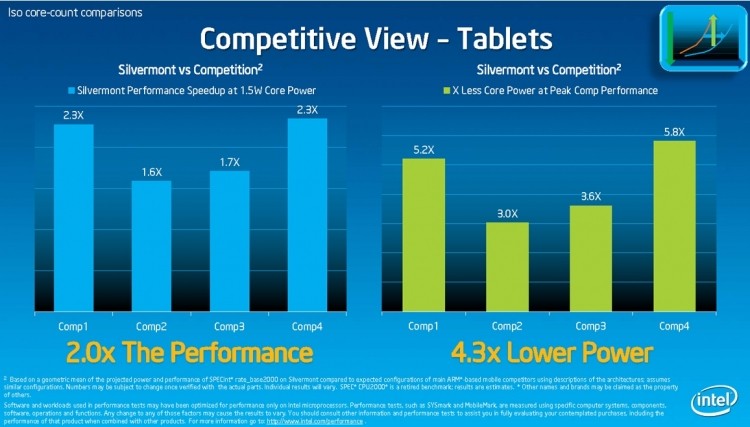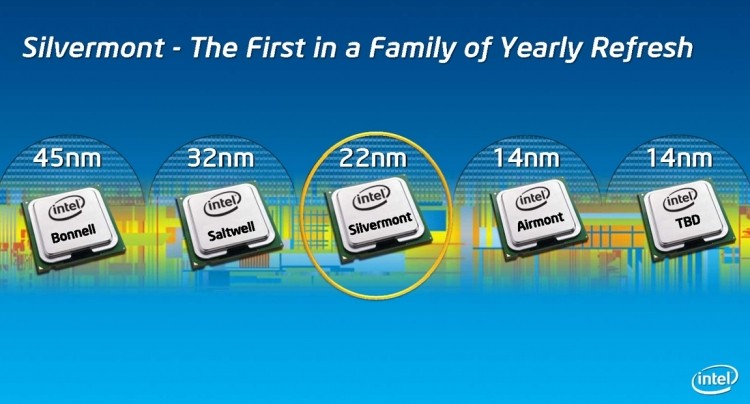With Haswell and Clover Trail+ just starting to make their way onto devices from a bunch of manufacturers, Intel is now taking the opportunity to tease a few details about its upcoming mobile parts at Computex. Namely, Bay Trail-T and Merrifield, both of which make up Intel’s third-generation Atom architecture known as Silvermont.
Details are scarce at this point but Intel was able to confirm that the new architecture is set to debut by the end of the year with Bay Trail-T powered tablets, followed by Merrifield smartphones in early 2014. Both SoCs are said to offer “3x more peak performance, or 5x lower power” compared to existing Atom chips.
Although the company has previously said Silvermont chips will support up to eight processor cores, initially their focus seems to be on quad-cores for tablets. The chips will reportedly enable eight hours or more of battery life, based on a 10.1-inch full HD slate with a 30Wh power pack, with support for both Android and Windows operating systems. Bay Trail-T tablets will ship starting for around $400 later this year.

During his presentation at Taipei’s International Convention Centre, Intel Vice President Tom Kilroy briefly showed off a reference design for a Merrifield based smartphone, but other than promising the usual power and performance improvements, as well as support for screen resolutions up to 2560 x 1440 pixels, most details are being kept under wraps until Mobile World Congress in February 2014.
One feature that did get a brief mention in a presentation slide was Sensor Hub. Initially developed for ultrabooks, the technology will essentially allow a smartphone to continuously use sensors like GPS, accelerometer, gyroscope, and more without consuming much power.
Intel also unveiled the XMM 7160, its first multi-mode 2G/3G/4G LTE-capable modem with global roaming capabilities, which is set to be paired with Silvermont smartphones and tablets.
Silvermont is first major architecture redesign of Atom since the chips were released for netbooks in 2008. It also marks the beginning of Intel’s tick-tock cycle for ultra mobile parts and low power devices, with yearly updates planned much in the same way the company has being doing for desktops and laptops -- quite successfully too. The first of such updates will come in the for of Airmont by 2015 with the move to a 14nm process.

The company is still largely absent from the smartphone and tablet arena, but claims they are already “gaining traction” and changing the perception that their chips can’t compete in low-power devices. They still have a lot to prove and are getting their chance soon after notably scoring a deal to power the Samsung Galaxy Tab 3 10.1.